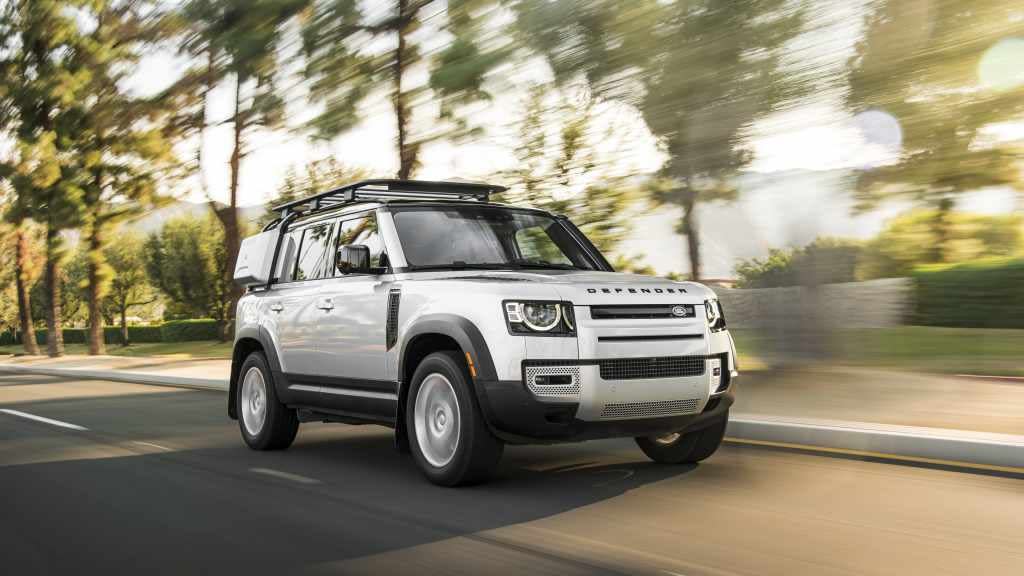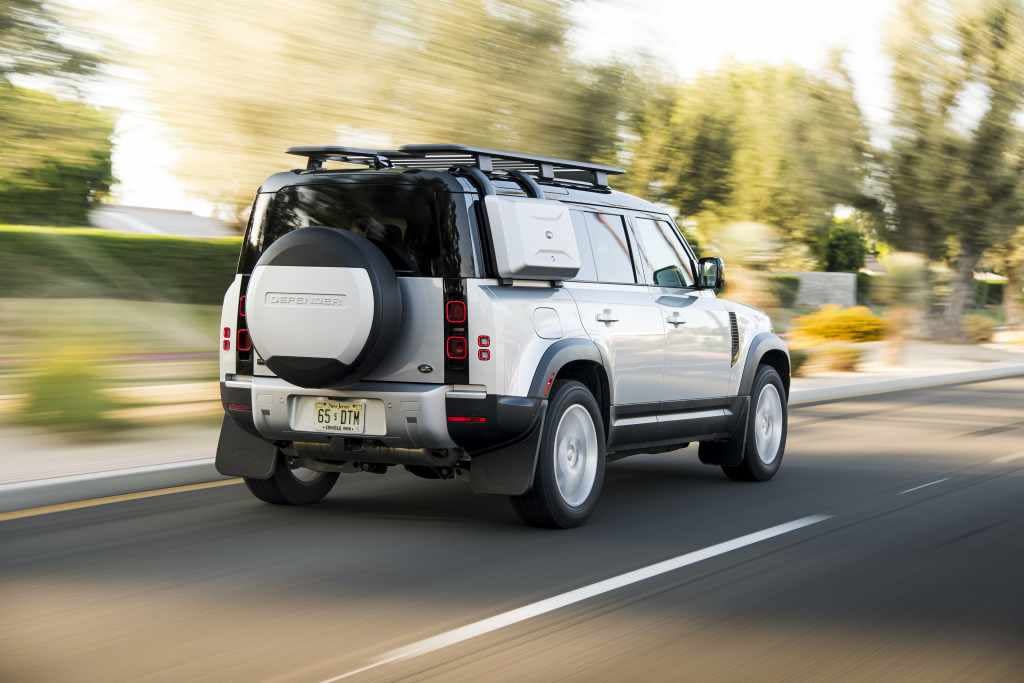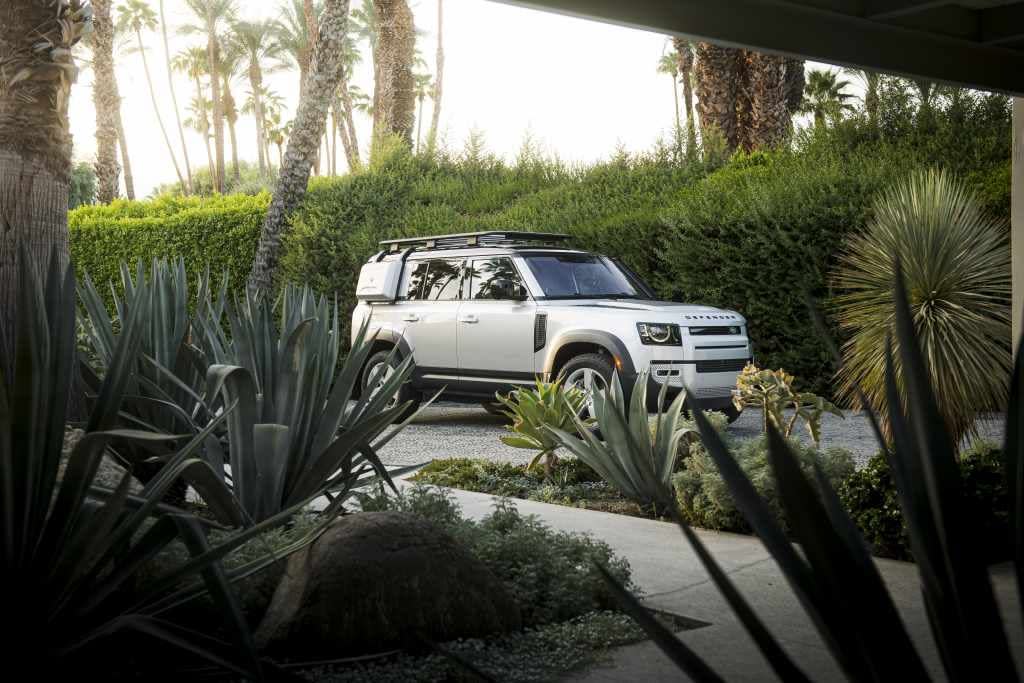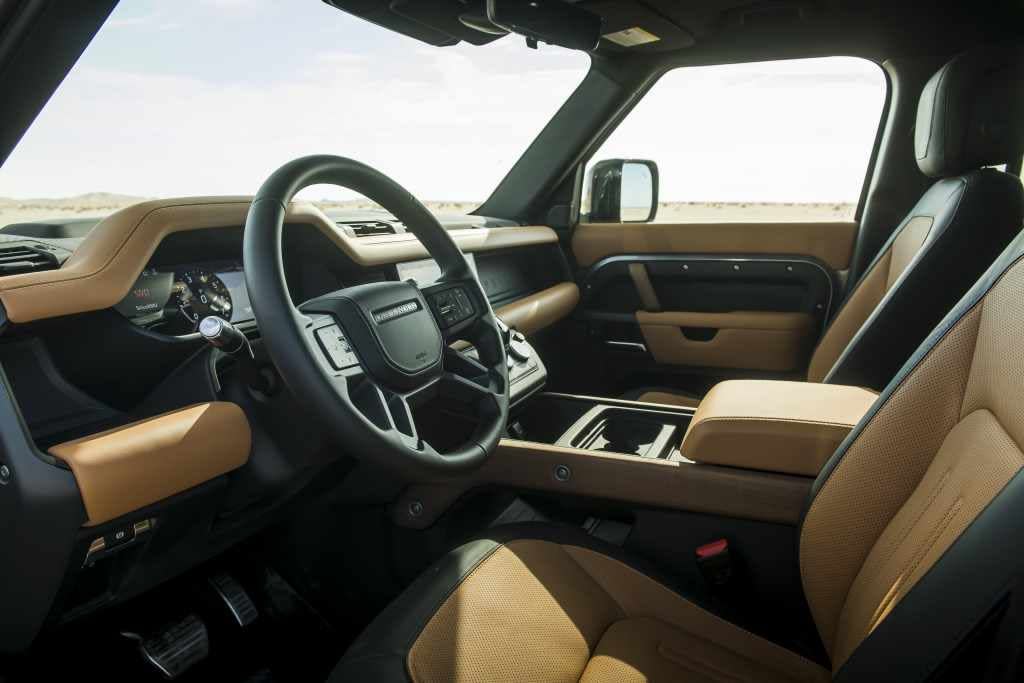Why You Should Choose the Inline-Six Over the V-8 in the Defender

Because I’ve got the frontal lobe of a dirty ape hard mounted to my brain stem, I enjoyed the V-8 Land Rover Defender 110 tremendously. Not for usability or versatility or anything resembling common sense, but because good noises growl out of that Defender’s exhaust pipes and there are fewer sensations more visceral than hurtling two-and-a-half tons down a gravel backroad at interstate speeds.
The V-8 Defender’s overwhelming charisma—but especially the charisma of that engine—allowed me to look past the vehicle’s flaws.
But what if you chopped back that charisma and instead focused on bringing the rest of the vehicle up to snuff? The 2024 Defender 110 S answers that very question.

In place of the supercharged 5.0-liter V-8 sits a 3.0-liter turbo six. The engine makes 395 horses and 406 lb-ft. and routes that grunt through an always-butter 8-speed automatic. The Defender's same basic coil suspension remains, but our test car was spec’d with a $1600 Air Suspension Pack, an Off-Road Pack that adds an e-diff and tires, plus a Cold Climate Pack that heats the windshield and washer jets. The cherry on top is a set of 20-inch color-matched steelies that will draw comments from anyone who stands across from you at the fuel pump.
All told, our Fuji white tester begs $81,103 from the midlands gentry or Los Angeles Chav or whoever shops for a Defender in 2024.
While the turbo-six lacks the outright grunt of that supercharged V-8, the calibration of the six-pot car makes a world of difference. In my previous review, I complained about how difficult it was to drive the V-8 Defender smoothly–how the first couple inches of pedal travel produced barely any forward motion and the following centimeter rocketed the Defender off the line. That, when paired with a touchy, on/off brake pedal, required a ton of patience in bumper-to-bumper traffic and only seemed to come alive if you drove the truck like a real knobhead.
The inline-six Defender’s pedal and drivetrain calibration work far better. That lump of torque is available down low, in its entirety, and the “go” pedal provides a far more linear application of the available torque. Driving at any speed, it’s far easier to get what you want from this engine than the supercharged V-8, despite the difference in power produced by the two engines.

Same goes for the brakes, which require a decent amount of pedal travel before the bite point arrives but offer a far more progressive application of that braking force across the pedal’s travel.
The inline-six even sounds great. Before I opened the hood to check for myself, I suspected Land Rover had sent me the wrong build sheet ahead of the car’s delivery. It’s a burbly, slightly coarse engine note that squeezes its way into the cabin. While it can’t match the outright theater of Land Rover’s V-8, this six is doing a damned fine impression. Good enough you may wonder if your Defender is V-8 powered anyways.
For nearly all driving situations, save the times you’re really hammering up a greasy switchback, the inline-six car is a better thing to drive. Even then, on a rutted muddy gravel road out to my buddy’s house at the base of the Cascade mountains, the inline-six Defender did its best mountain goat impression, scrabbling through the slick mud, allowing a little wheel slip before clamping into the ground and rocketing up the hill.
This wasn’t a thorough off-road torture test, the kind you do at Moab with enough wheel articulation and rock bashing to test the Defender’s fringe talents, but the mixed and muddy conditions were about as gnarly as most Defenders will face. The inline-six powered 110 S turned the scrabble from nerve-racking to confidence-inspiring to fun, as all cars with good balance and competent all-wheel drive systems seem to do.

It’ll save you a huge chunk of change to select this engine too. The base MSRP for a Defender 110 S sits right at $67,900. I’d probably take the Cold Weather and Off-Road Packs and waffle on the Air Suspension, but by taking off options like a roof in contrasting colors and those super-cool color-matched wheels, I think you could get a into a Defender 110 in a righteous spec for something like $73,000 out the door.
It's what I’d do with my own money.
In daily use, however, the engine option won’t do much to pare away the Defender’s niggles. It’s still terribly difficult to see out of this long SUV, so high is its beltline; I found myself crawling through parking lots and even out of my own driveway at maybe one-quarter the speed I do in my own midsize pickup. Lane changes on the interstate require faith in the divine, especially if you’re moving to the right and looking back over your shoulder; there’s just not enough real estate in the side mirrors to cover the Defender’s length with confidence and I yearn for a system like Honda’s lane change camera, which displays your blind spot on the center screen when you flick on the turn signal.
As a counterpoint to the Defender’s inherent flaws, this lower-trimmed car still feels like a smartly appointed, premium product. There’s tons of headroom, an expansive moonroof, and an infotainment system that’s laid out in a generally pleasant, easily navigable way. For passengers in the back, that headroom is preserved alongside a generous allotment of space for knees and hips and shoulders; you’ll fit four adults and their stuff in great comfort.
Land Rover does not have the most sterling reputation for reliability, so it’d be smart to budget extra cash for repairs if you’re shopping for a Defender, and to spring for the most comprehensive maintenance and insurance programs your budget will allow. With this inline-six Defender, you’re leaving a little on the table by way of charisma, but improving the vehicle in most ways that make a difference to daily use. If the huge chunk of change that separates the six- and eight-cylinder Defenders affects the math from a personal finance standpoint, then the decision here is easy.
The inline-six Defender offers a better-balanced experience by way of its improved control calibration, efficiency, and price. You can’t lose with either Defender (so long as you can keep up with potential repairs), but one truck asks far less of your patience in daily driving, and far less of your wallet.
Choose accordingly.
You Might Also Like
